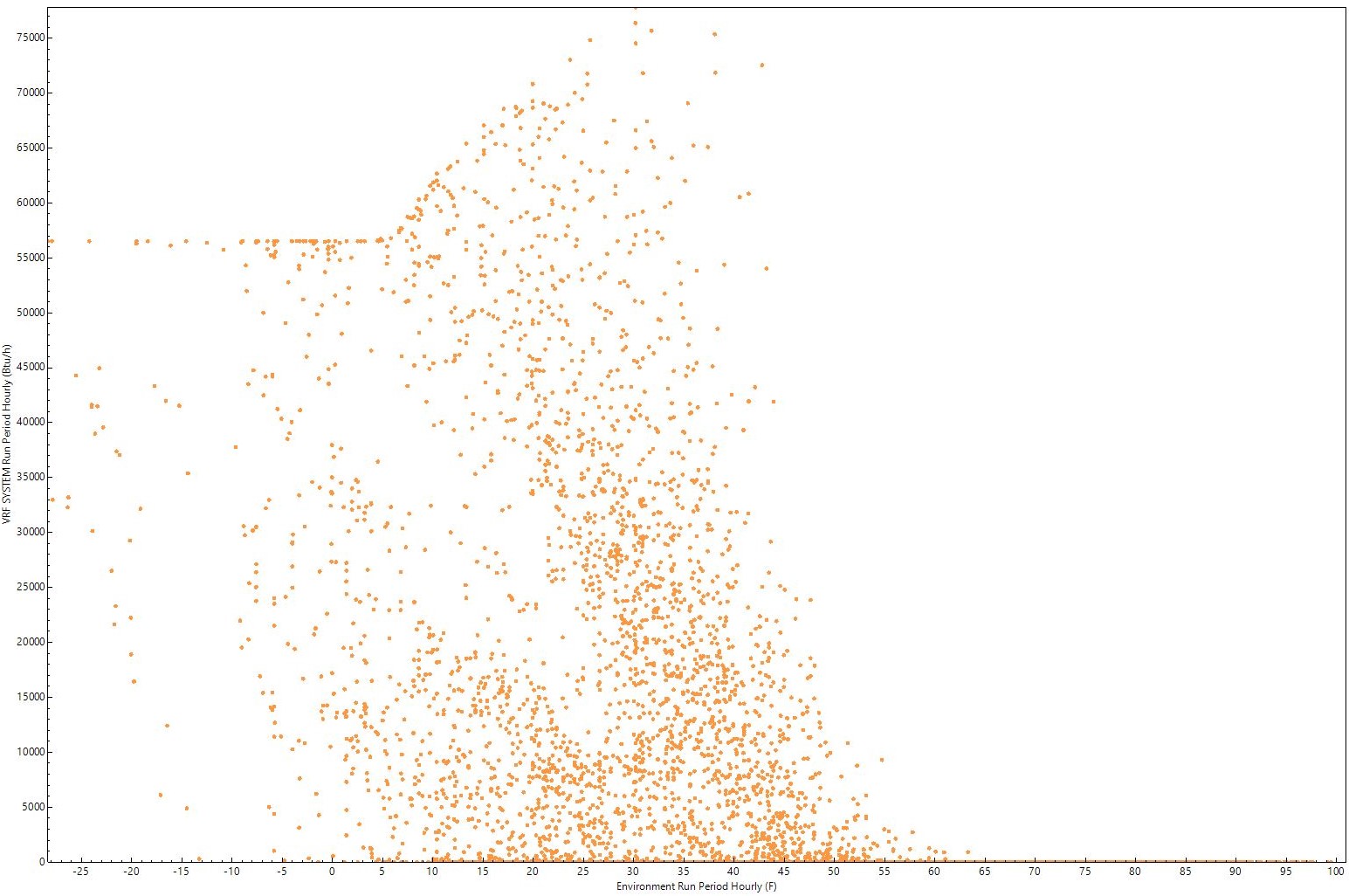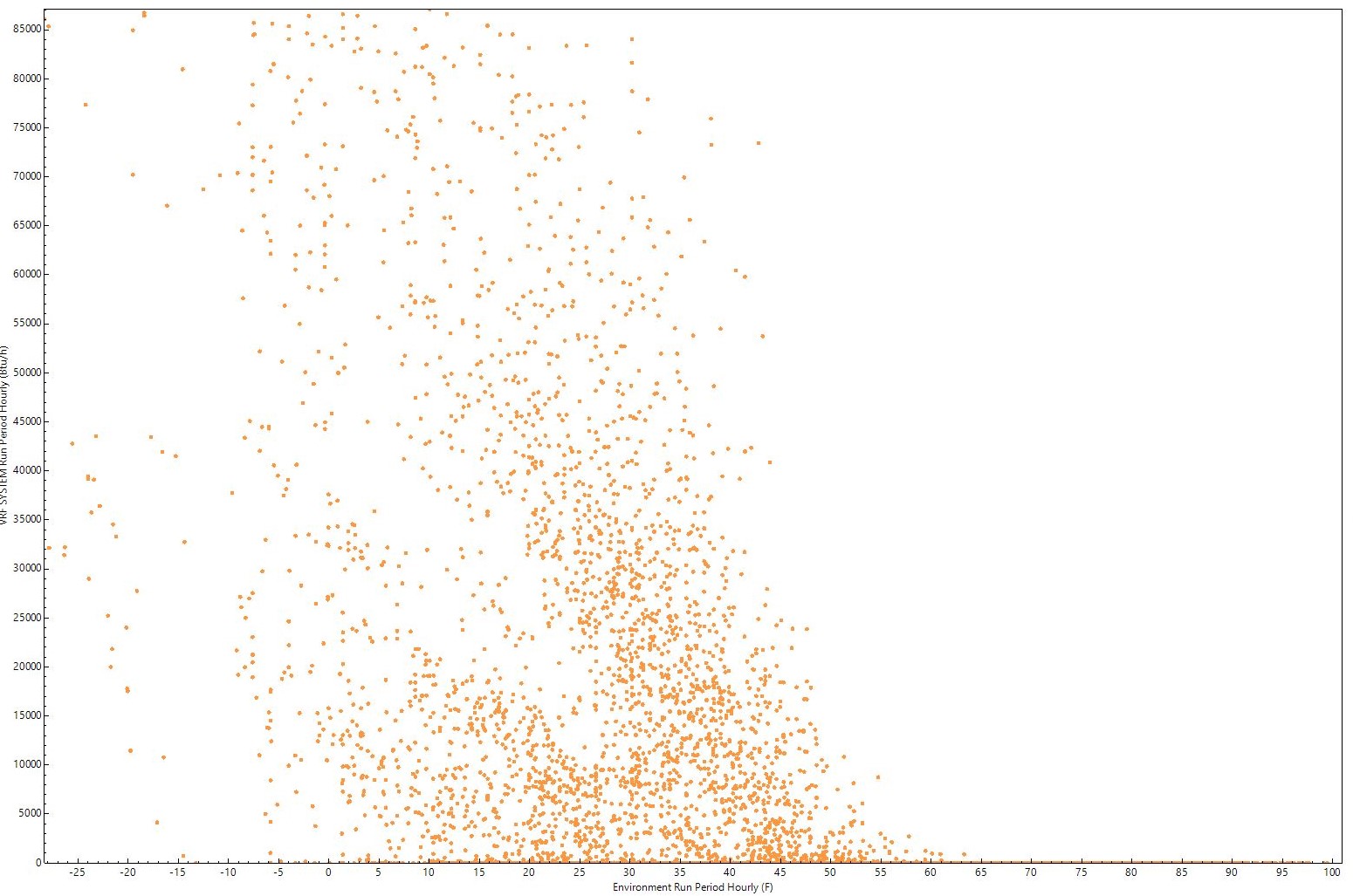Water Source VRF Capacity vs OA Temp
I am modeling a water source VRF system in Montana with low ambient temperatures in the winter and finding the VRF system heating capacity drops off at low temperatures despite consistent condenser water loop temperatures. I am using the AirConditioner:VariableRefrigerantFlow object in EnergyPlus as it seems difficult at best to model this in OpenStudio. I tried adjusting capacity curves to fix this and even tried setting the curve to return a constant value of 1 independent of temperature and kept getting the same result. The solution I found is to change the "Heating Performance Curve Outdoor Temperature Type" from WebBulbTemperature to DryBulbTemperature. As a water source VRF system, it seems like this variable should have no bearing on heating capacity, but it fixes my issues.
Any ideas?
Here is the VRF system capacity vs. OA temp with the type variable set to wetbulb:

Here is the VRF system capacity vs OA temp with the type variable set to drybulb:






